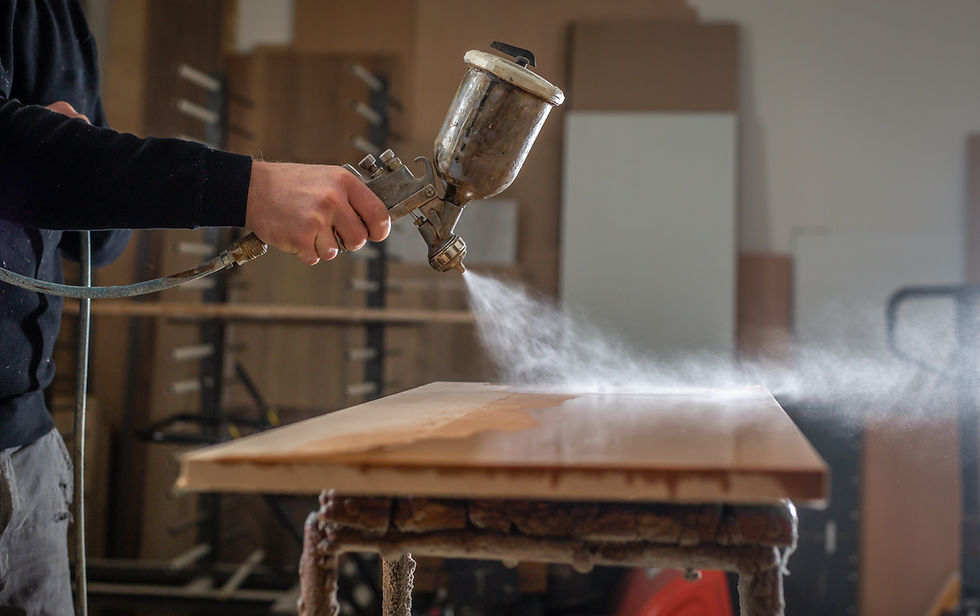How To Remove Water Rings From Wood Furniture Without Damaging the Finish
- ER Kent

- Oct 8
- 3 min read
Gentle, Proven Methods to Erase White and Dark Water Stains While Protecting Your Wood’s Beauty

It happens in a second — you set down a drink without a coaster, and by the time you notice, there’s a pale ring on your beautiful wood table.
These marks, called water rings or water stains, are one of the most common furniture mishaps.
While they can look permanent, many water rings can be removed at home without sanding, refinishing, or calling in a professional. The trick is knowing what kind of stain you’re dealing with and which gentle methods actually work without harming your furniture’s finish.
What Causes Water Rings on Wood
According to the Woodworking Network, water rings form when moisture seeps into the finish but not all the way into the wood itself.
White water rings usually mean moisture is trapped in the finish layer (from a cold glass, hot mug, or condensation).
Dark water rings indicate the water has penetrated into the wood fibers — often requiring deeper treatment or refinishing.

Step One: Identify the Finish Type
Different wood finishes react differently to cleaning methods:
Lacquer and shellac finishes are more sensitive to moisture and heat.
Polyurethane is more water-resistant but still can develop surface marks.
Oil finishes like tung or linseed oil absorb stains differently and may require re-oiling after cleaning.
If you’re unsure, test your cleaning method on an inconspicuous spot before applying it to the ring.
Step Two: For Fresh White Water Rings
If the mark is only hours or a day old, quick action can often erase it completely:
Blot gently with a clean, dry cloth to remove any surface moisture.
Apply gentle heat — place a cotton cloth over the ring and run a warm (not hot) iron over it for 5–10 seconds at a time.
Check after each pass; the heat helps evaporate trapped moisture.
Light heat application is one of the safest first steps for new water marks.

Step Three: Mayonnaise or Petroleum Jelly Method
For older white rings, oils can help replace the moisture and restore the finish’s clarity:
Dab a small amount of mayonnaise or petroleum jelly onto the ring.
Let it sit for several hours or overnight.
Wipe clean with a soft cloth and buff gently.
This works because the oils penetrate the finish, displacing the trapped moisture and blending the mark into the surrounding wood.
Step Four: Baking Soda Paste for Stubborn White Rings
If the stain persists:
Mix 1 tablespoon baking soda with 1 teaspoon water to form a paste.
Rub gently in circular motions with a soft cloth.
Wipe clean and dry thoroughly.
Avoid over-rubbing, which can dull the finish.

Step Five: Dark Water Rings
Dark rings mean water has penetrated into the wood — these are more challenging:
Apply wood bleach (oxalic acid) carefully following manufacturer instructions.
Once the stain lightens, refinish the affected area to match the rest of the piece.
The Woodworkers Guild of America notes that dark stains often require refinishing if bleaching isn’t fully effective.
What NOT to Do
Don’t use harsh abrasives — steel wool or coarse sanding can damage the finish permanently.
Avoid soaking the area — more moisture can worsen the stain.
Skip colored polishes unless you’re ready to commit — they can mask rather than remove the stain and make refinishing harder later.
Preventing Future Water Rings
Always use coasters and placemats.
Wipe spills immediately — even a few minutes can cause a mark.
Maintain your finish with occasional waxing or oiling, depending on the wood type.
Maintaining a protective finish layer is the best defense against moisture damage.

The Bottom Line
Water rings on wood furniture are frustrating, but in many cases, they’re not permanent. By identifying the type of stain and using the right gentle method — from quick heat fixes to oil-based treatments — you can restore your table or dresser without expensive repairs.
With a little care and preventive maintenance, you can enjoy your wood furniture for decades without those telltale rings.








header.all-comments